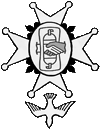It was King Edward VI who, in 1550, granted freedom of worship in his kingdom to the “Strangers”. In his day, the vast bulk of the crowds of refugees gathered here in England were Walloons – French-speakers from the Low Countries, ruled, at that time from Spain – and fiercely persecuted by the authorities in those lands.
Given freedom of worship here, it was the Walloons who, arriving on our coasts in large numbers, to escape cruel persecution in their own lands, were encouraged to establish congregations in Kent and other parts of England, particularly of course in London. After a 5 year interruption to this process during the reign of Queen Mary, the Strangers' churches, in the reign of the Protestant Elizabeth I, proliferated across our land to the extent that at one point, according to some authorities, there were, at one time, no fewer than seventy.
The Huguenots, the bulk of whom arrived in England towards the end of the 17th century, were following the Walloons' beaten path, and joining, by and large, congregations which had been founded over a century before.
This fundamental point is underlined by the Order in Council issued in 1662 in regard to the congregation which had been established here in Canterbury long before the dragonnades and the Revocation.
It is to be noted that the official, legal name of our church, is the French Walloon Church of Canterbury.
Michael Peters, 2018
